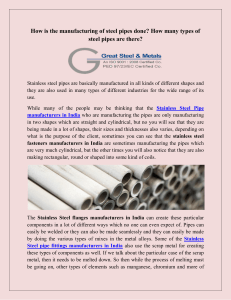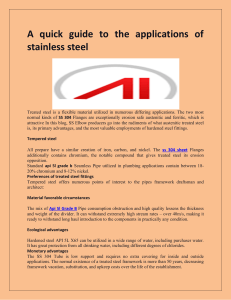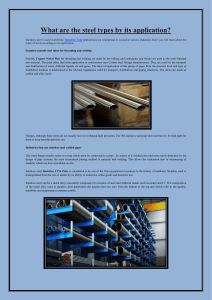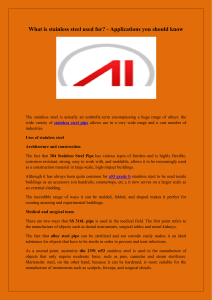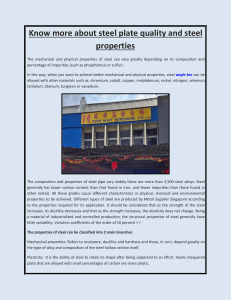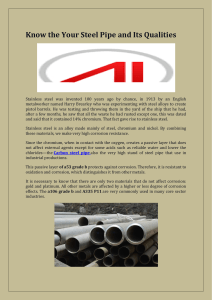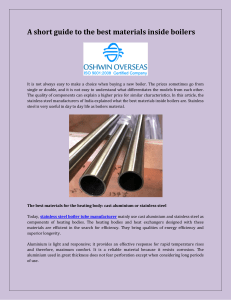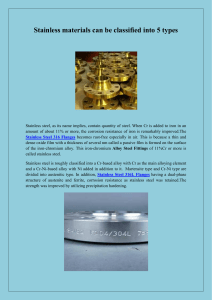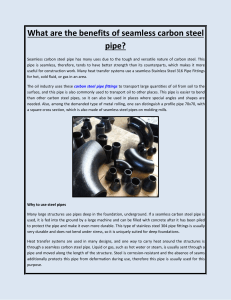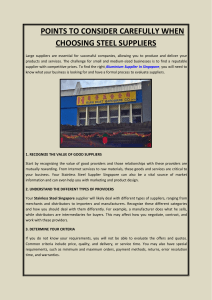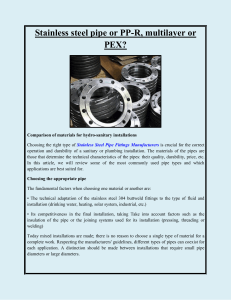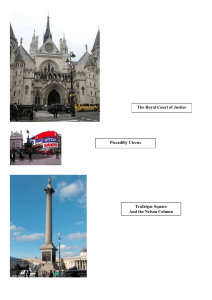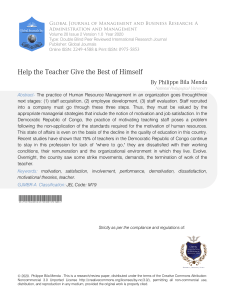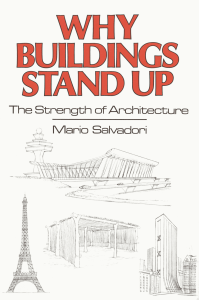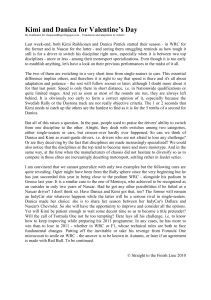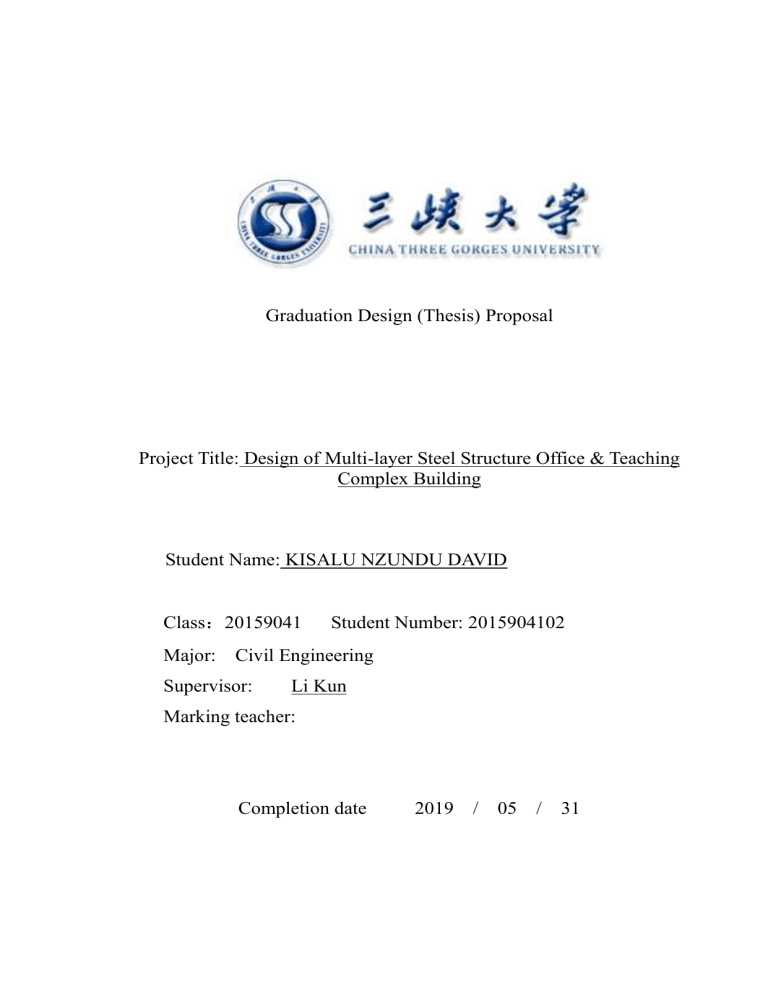
Graduation Design (Thesis) Proposal Project Title: Design of Multi-layer Steel Structure Office & Teaching Complex Building Student Name: KISALU NZUNDU DAVID Class:20159041 Student Number: 2015904102 Major: Civil Engineering Supervisor: Li Kun Marking teacher: Completion date 2019 / 05 / 31 10 1 Design of Multi-layer Steel Structure Office & Teaching Complex Building Student name:KISALU NZUNDU DAVID Guidance teacher:LI KUN (College of Civil Engineering and Architecture, China Three Gorges University) 1 Topic Source This topic is Multi-layer Steel Structure Office & Teaching Complex Building Subject: Steel structures 2 Purpose and Significance of the Research 2.1 The Future Steel structures represent, on a larger scale, a significant part of the future of structures in general, but also of civil engineering in particular. The steel being a highly versatile material, which has proven itself in the field of construction by making itself almost indispensable, is a must-have, whose various properties both in tension and in compression, in stiffness, in ductility, make of This alloy "the" material of the present and future of the field of structures. Given that our field of research is steel in civil engineering, it is much more of this aspect that we will talk through this research. Gaining experience in this field-civil engineering-opens up perspectives on the future of the engineering community in general, and that of the engineer in charge, in particular. 2.2 Steel for a teaching building The Teaching buildings (school, university) are important urban structures, which can shelter a large number of people, being subject to large loads, both static and dynamic, the stakes are therefore important when it comes to Design. Since concrete has been proven to be associated with steel, capable of withstanding large loads, but with the disadvantage of being extremely cumbersome and cumbersome, it is therefore normal to turn to the lighter steel frames, easily maneuverable, with a certain advantage in terms of construction time, and not necessarily more expensive if we know how to evaluate the costs. So, it seems normal to opt for steel, the main objective of the research being to design a building of teachings. Some constraints are eliminated compared to concrete, for which two materials are to be treated (concrete combined with steel), while in the context of our research, we mainly treat only steel, including concrete for some members only (wall, pavement...) 2.3 Purpose and Significance The aim and importance of this project is based mainly on a goal to bring about, why not 10 2 significant, the discipline of civil engineering, to one of these most innovative areas in terms of technology, having experienced a rise in recent years. We will try personally through this research, to gain in maturity and experience. This experience at the pace of internship will give us another perspective on discipline, and more specifically on design, which is a significant part of our job. 3 Research Status and Development Trend at Home and Abroad 3.1 At home: Democratic Republic of Congo The use of steel structures in the Congo is rather oriented towards a particular area: factories and plants. The Democratic Republic of the Congo being a country particularly rich in raw materials, more specifically in ores of all kinds, has quickly seen an emergence of steel structures for several years, steel being the preferred material When it comes to the construction of mining plants and ore processing. The Democratic Republic of the Congo (DRC) is the world's largest producer of cobalt ore, and a major producer of copper and diamonds. The latter come from Kasai province in the west. By far the largest mines in the DRC are located in southern Katanga province (formerly Shaba), and are highly mechanized, with a capacity of several million tons per year of copper and cobalt ore, and refining capability for metal ore. The DRC is the second-largest diamond-producing nation in the world, and artisanal and small-scale miners account for most of its production. (Wikipedia) By 2015, Democratic Republic of the Congo (DRC) supplied 60% of world cobalt production, 32,000 tons at $20,000 to $26,000 per ton. The Democratic Republic of Congo is widely considered one of the world's richest countries in natural resources; its untapped deposits of raw minerals are estimated to be worth in excess of US$24 trillion. The Congo has 70% of the world's Coltan, a third of its Cobalt, more than 30% of its diamond reserves, and a tenth of its copper. Based on what is already known about the mining situation in the Congo, one understands immediately why steel structures are a necessary asset in the second largest country in Africa. We will therefore try to give a better perspective through the examples below: The projects and details on the various industrial exploitation structures in the Congo being extremely difficult to obtain due to the often confidential nature, we propose to discover in the first time the bridge of Matadi: 3.1.1 Introduction The Matadi Bridge Project is based on the agreement between Japan and the Republic of Zaire, and the construction order was placed by OEBK (Organisation pour l'Equipement de Banana-Kinshasa), Zaire Government. In the bid opened in November 1978, the Japanese Consortium (C-IHI) received Orders for all construction works including the superstructure and substructure of the bridge and the access road. The construction is (was) currently under way in the suburbs of Matadi City (Fig. 1). 10 3 3.1.2 Project requirements The Matadi Bridge is a double-deck type Suspension bridge used both as railway and roadway. The upper deck is used as a 2-lane road for the present, and will be expanded to be 4 lanes in the future by adding foot walks on the outer sides. A Single-track railway will be laid on the lower deck, which will be put into practical use after the railway routes on land are constructed. The loadings and allowable stresses for the structure are based on the Zaire Standards in the Contracted Technical Specifications, while the design details are due to the Japanese Standards concerned. The design live loads are as follows: Roadway: Uniform load 340kg/m2 Line load 1200kg/m Trailer load As per Zaire Standards T-32 (32-ton trailer) Railway: Wheel load As per Zaire Standards C-3 (Locomotive axle load 18 ton, wagon axle load 20 ton) Uniform load 7.4 ton/m (maximum loaded length 295m) 70 percent of the railway load should be used when fatigue effect due to running of trains is taken into account. 3.1.3 Type of bridge At the beginning, four types of structures, namely (1) Suspension bridge, (2) cable-stayed bridge, (3) arch bridge and (4) cantilever truss bridge, were compared. After the types (3) and (4) had been rejected mainly for economic reasons, a detailed comparative study of the types (1) and (2) were made with particular emphasis on the study of long span railway bridge. As far as the fatigue of cable is concerned, the Suspension type is advantageous because the dead load stress is always dominant in cable tension. On the other hand, the members of stiffening truss of a Suspension bridge are subjected to greater stress Variation due to the live load. Furthermore, the bending moment on the Supports at the towers will be large in the present bridge. After careful investigation, it was found that these shortcomings would be solved by the use of appropriate erection method and the adjustment of side span length. The stability of the bridge against wind during and after the construction was also studied. Thus, the comprehensive studies both in technical and economic aspects resulted in the adoption of the Suspension bridge. More details included in the project review by Ito, Yachida and Narude, the Japanese engineers in charge. 10 4 3.2 Abroad Recent developments in the practical utilization of cold-formed sections in building construction have taken place on three related fronts. There have been significant developments in the technology which result in more complex shapes with a higher yield stress so that cold-formed sections represent a particularly high-tech form of constructional steelwork. Developments in technology would be of little consequence unless there were parallel developments in practical applications and this is illustrated by the continual increase in the market share of cold-formed sections. This, in turn, makes demands on design 10 5 procedures and requires parallel development in calculation models and design codes. In particular, sections have tended to become more highly stiffened and this necessitates a more sophisticated treatment of local buckling, distortional buckling and the interactions between them. The latest trend is to move from simplified design models to design procedures based on “whole section” analysis. Compared with the traditional concrete, the steel structure workshop building has the characteristics of high strength, high toughness and good ductility, which will bring significant advantages to the structural performance, economic performance and environmental protection performance of the steel structure building. In particular, the advantages of environmental protection and our advocacy of building energy conservation and environmental protection coincide. With the strong support from the policy, the demand for residential steel structure workshop building for green building and affordable housing construction is increasing day by day. The residential steel structure industry is in the midst of the outbreak of power generation. Here are a few examples from NEHRP Recommended Provisions: SEVEN-STORY OFFICE BUILDING, Los-Angeles, California Two alternative framing arrangements for a seven-story office building are illustrated. This seven-story office building of rectangular plan configuration is 177 feet, 4 inches long in the E-W direction and 127 feet, 4 inches wide in the N-S direction. The building has a penthouse. It is framed in structural steel with 25-foot bays in each direction. The typical story height is 13 feet, 4 inches; the first story is 22 feet, 4 inches high. The penthouse extends 16 feet above the roof level of the building and covers the area bounded by Gridlines C, F, 2 5. Floors consist of 3-1/4-inch lightweight concrete over composite metal deck. The elevators and stairs are located in the central three bays. Modal Response Spectrum Analysis is used. 10 6 More details about this example can be found in NEHRP Recommended Provisions: Design Examples, to fully understand the modern trend and development of structural steel. TEN‐STORY HOSPITAL, SEATTLE, WASHINGTON This example features a buckling-restrained braced frame (BRBF) building. The example covers: Analysis issues specific to buckling-restrained braced frames Proportioning of buckling-restrained braces Capacity design principles Nonlinear response history analysis Buckling-restrained brace connections This ten-story hospital includes a two-story podium structure beneath an eight-story tower, as shown in Figures 6.3-1 and 6.3-2. The podium is 211.3 feet by 121.3 feet in plan, while the tower’s floorplate is square with 91.3-foot sides. Story heights are 18 feet in the podium and reduce to 15 feet throughout the tower, bringing the total building height to 156 feet. As the tower is centered horizontally on the podium below, the entire building is symmetric about a single axis. Both the podium and the tower have large roof superimposed dead loads due to heavy HVAC equipment located there. 10 7 More details about this example can be found in NEHRP Recommended Provisions: Design Examples, to fully understand the modern trend and development of structural steel. 4 Main Contents of the Research and the Application Value of the Research Result 4.1 Research body Using the architectural background that we have, and the knowledge of civil engineering acquired during these three and a half years, we will be able to design a teaching building, not without having done several researches beforehand, to tweak the details of the task entrusted to us. Indeed, this work was the result of an assiduous reading of several reference documents including codes of design and constructions of steel structures, from all over the world in general, but especially from China in particular. It is therefore with great diligence that we have conducted this research, to collect the necessary elements that will lead us to the completion of our task. 4.2 Content The architectural design of the structure is based mainly on classical orthogonal forms, although a slight note of originality can be noted in the layout of the three buildings which will constitute the whole complex, namely, a Building for teaching consists of audiences and a refectory, a building containing offices for the faculty, and finally an amphitheater for any kind of show and ceremony organized within the establishment. The structural design is based on the different fundamental principles of the design of structures having a steel frame, mainly the Code for design of steel structures (GB50017-2017), the different pavements of reinforced concrete, connections essentially made of rivets and welds, taking care to determine the appropriate locations for connection joints. 10 8 4.3 Application Value According to the value of fundamental research by Crios Do Remedios, there are three benefits of fundamental research: Acquisition of new knowledge, social benefits to society and economic gains, and that’s exactly what we feel like it’s going bring through this experience. Acquisition of new knowledge is something that we hope we can gain throughout the process of this graduation design. Being supervised by one of the best teachers in CTGU, we can only achieve something great, with such a priceless helping hand. Social benefits will be directly felt, while helping my country with my understanding of steel structures after the graduation. Congo is a country with a great potential, which needs people the build it, because there is still a lot to build. And finally, for the economic gains, we hope that in the future, all the work we did to get knowledge from the best, will finally pay. 5 Main Stage of Work and Progress - - The1st week(Before2019.3.3)Submit Graduation Design Proposal The 3rd Week(Before2019.3.15)Complete the architectural scheme and drawings The 7th Week(Before2019.4.12)Complete the architectural drawings The 9th week(Before2019.4.26) Submit Interim report and Supervisor comment The 13thweek(Before2019.5.24) Complete the structural design and construction drawings. Submit to Supervisor and Supervisor reviews all achievements. The 14thweek(Before2019.5.31) Complete Graduation Design after revision. 2019.6 Graduation Presentation 10 9 References [1] Matadi Bridge (Le Pont Maréchal) http://www.jsce.or.jp/e/archive/project/pj02.html Construction Project, [2] Matadi Suspension Bridge, https://structurae.net/structures/matadi-suspension-bridge [3] Ito, M. / Yachida, M. / Naruse, T., Matadi Bridge over the Zaire River [4] Democratic Republic of the Congo, https://en.wikipedia.org/wiki/Democratic_Republic_of_the_Congo#Mining [5] NEHRP Recommended Provisions: Design Examples (2006) [6] Dr. Seshu Adluri, Structural Steel Design Beam-Columns [7] AMERICAN INSTITUTE OF STEEL CONSTRUCTION, Specification for Structural Steel Buildings, July 7, (2016) [8] Transportation Research Board. 1991. p. 130., Bridge Aesthetics Around the World (1991) [9] Xu Huahua, Architectural Design & Construction [10] G.A.R. Parke, B. Young, R. Ziemian, Journal of Constructional Steel Research [11] R. Bjorhovde, Structural steel research and design: Where are we headed? [12] N. Trahair, M. Bradford, D. Nethercot, L. Gardner, The Behaviour and Design of Steel Structures to EC3 - 4th Edition [13] Crios Do Remedios, The Value of Fundamental Research (Article) [14] Leet, fundamentals of structural analysis [15] Chris Grimley, the interior design: reference and specifications book [16] Browns, Iles, Yandzio, steel building design : medium rise braced frame in accordance with the Eurocodes and the UK national annexes [17]


